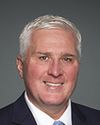Is the House ready for the question?
House of Commons Hansard #147 of the 44th Parliament, 1st Session. (The original version is on Parliament's site.) The word of the day was news.
House of Commons Hansard #147 of the 44th Parliament, 1st Session. (The original version is on Parliament's site.) The word of the day was news.
Foreign Affairs and International DevelopmentCommittees of the HouseRoutine Proceedings
11:50 a.m.
NDP
Foreign Affairs and International DevelopmentCommittees of the HouseRoutine Proceedings
11:50 a.m.
Some hon. members
Question.
Foreign Affairs and International DevelopmentCommittees of the HouseRoutine Proceedings
11:50 a.m.
NDP

The Assistant Deputy Speaker NDP Carol Hughes
The question is on the motion.
If a member of a recognized party present in the House wishes that the motion be carried or carried on division or wishes to request a recorded division, I would invite them to rise and indicate it to the Chair.
The hon. member for Sherwood Park—Fort Saskatchewan.
Foreign Affairs and International DevelopmentCommittees of the HouseRoutine Proceedings
11:55 a.m.
Conservative

Garnett Genuis Conservative Sherwood Park—Fort Saskatchewan, AB
Madam Speaker, we request a recorded vote and seek the unanimous consent of the House to defer the vote to tomorrow following question period.
Foreign Affairs and International DevelopmentCommittees of the HouseRoutine Proceedings
11:55 a.m.
NDP
Foreign Affairs and International DevelopmentCommittees of the HouseRoutine Proceedings
11:55 a.m.
Some hon. members
Agreed.
Foreign Affairs and International DevelopmentCommittees of the HouseRoutine Proceedings
11:55 a.m.
NDP

The Assistant Deputy Speaker NDP Carol Hughes
Accordingly, by unanimous consent, the division stands deferred until Wednesday, December 14, at the expiry of the time provided for Oral Questions.
Committee TravelCommittees of the HouseRoutine Proceedings
11:55 a.m.
Winnipeg North Manitoba
Liberal

Kevin Lamoureux LiberalParliamentary Secretary to the Leader of the Government in the House of Commons
Madam Speaker, there have been discussions among the parties, and if you seek it, I believe you will find unanimous consent for the following motion. I move:
1. That, in relation to its study of the situation at the Russia-Ukraine border and implications for peace and security, seven members of the Standing Committee on Foreign Affairs and International Development be authorized to travel to Brussels, Belgium; Helsinki, Finland; Stockholm, Sweden, and Warsaw, Poland, in the Winter of 2023, during an adjournment period, and that the necessary staff accompany the Committee.
2. That, in relation to its study of Arctic sovereignty, security and emergency preparedness of Indigenous Peoples, seven members of the Standing Committee on Indigenous and Northern Affairs be authorized to travel to Yellowknife, Northwest Territories; Kugluktuk, Nunavut, and Cambridge Bay, Nunavut, in the Winter of 2023, during an adjournment period, and that the necessary staff accompany the Committee.
3. That, in relation to its study of large port infrastructure expansion projects in Canada, seven members of the Standing Committee on Transport, Infrastructure and Communities be authorized to travel to St. John's, Newfoundland and Labrador; Halifax, Nova Scotia; Montréal, Québec; Toronto, Ontario; Hamilton-Niagara region, Ontario; Vancouver, British Columbia, and Prince Rupert, British Columbia, in the Winter of 2023, during an adjournment period, and that the necessary staff accompany the Committee.
Committee TravelCommittees of the HouseRoutine Proceedings
11:55 a.m.
NDP

The Assistant Deputy Speaker NDP Carol Hughes
All those opposed to the hon. parliamentary secretary moving the motion will please say nay.
It is agreed.
The House has heard the terms of the motion. All those opposed to the motion will please say nay.
(Motion agreed to)
RefugeesPetitionsRoutine Proceedings
11:55 a.m.
Liberal

Lloyd Longfield Liberal Guelph, ON
Madam Speaker, it is my pleasure to table a petition from members of the Dublin Street United Church in Guelph. The petitioners call on the Minister of Immigration, Refugees and Citizenship to intervene immediately to ensure that the backlog of refugee applications is greatly reduced and that Canadian sponsors can welcome many more refugees. There are 148 signatures from this group, which is really focused on helping refugees come to Canada.
Human Organ TraffickingPetitionsRoutine Proceedings
11:55 a.m.
Conservative

Garnett Genuis Conservative Sherwood Park—Fort Saskatchewan, AB
Madam Speaker, I have two petitions to present today.
The first petition is in support of Bill S-223, which is a bill to prohibit forced organ harvesting and trafficking. The bill would make it a criminal offence for a person to go abroad and receive an organ taken without consent. It would also create a mechanism by which a person could be deemed inadmissible to Canada if they are involved in forced organ harvesting and trafficking.
This bill has been before the House in various forms for the last 15 years, and it will be proceeding to a final vote tomorrow. The petitioners no doubt hope that it will finally pass into law.
Medical Assistance in DyingPetitionsRoutine Proceedings
Noon
Conservative

Garnett Genuis Conservative Sherwood Park—Fort Saskatchewan, AB
Madam Speaker, the second petition I am tabling raises concerns about calls by Louis Roy of the Collège des médecins du Québec to legalize infanticide in certain cases. People who signed this petition were horrified that someone from that college would openly, before a parliamentary committee, call for legal changes that would allow the killing of children, the killing of innocents.
The petitioners say that infanticide is always wrong. They call on the Government of Canada to block any attempt to legalize the killing of children in Canada.
Employment and Social DevelopmentPetitionsRoutine Proceedings
December 13th, 2022 / noon
NDP

Leah Gazan NDP Winnipeg Centre, MB
Mr. Speaker, it is such an honour to rise today to present a petition in the House.
Petition e-4095 calls on the government to address the need for an additional attachment leave benefit for families formed by adoption, kinship and customary care.
This petition, brought by Julie Despaties and the Time to Attach campaign, gathered 3,093 signatures. It calls on the government to bring equal treatment for adoptive parents, kinship and customary caregivers, and implement an additional 15-week attachment leave benefit under the employment insurance program.
Families formed by adoption, kinship and customary care need to have the critical opportunity during their first year of placement to form bonds and connections and improve long-term outcomes for children and youth and their families. This call for an additional attachment leave benefit addresses that need.
I am proud to table this petition in the House.
Questions on the Order PaperRoutine Proceedings
Noon
Winnipeg North Manitoba
Liberal

Kevin Lamoureux LiberalParliamentary Secretary to the Leader of the Government in the House of Commons
Mr. Speaker, the following questions will be answered today: Nos. 926, 927, 929, 930, 935 and 940.
Question No.926—Questions on the Order PaperRoutine Proceedings
Noon
NDP

Brian Masse NDP Windsor West, ON
With regard to the Connecting Families initiative announced in budget 2017 and the Connecting Families 2.0 program announced on April 4, 2022, broken down by fiscal year and province or territory: (a) on what dates were letters sent to households informing them of their eligibility; (b) how many households were notified that their eligibility was being re-assessed due to (i) changes to their Canada Child Benefit payments, (ii) changes to their Guaranteed Income Supplement payments, (iii) the receipt of Canada Emergency Response Benefits payments?
Question No.926—Questions on the Order PaperRoutine Proceedings
Noon
Saint-Maurice—Champlain Québec
Liberal

François-Philippe Champagne LiberalMinister of Innovation
Mr. Speaker, for part (a) of the question, letters were sent to households on the following dates to inform them of their eligibility: October 25, 2022, to families; September 29, 2022, to families; March 31, 2022, to families; March 25, 2022, to seniors; February 15, 2021, to families; February 1, 2021, to families; January 18, 2021, to families; December 19, 2019, to families; November 14, 2019, to families; September 11, 2019, to families; February 19, 2019, to families; and November 12, 2018, to families.
For part (b), no households were notified that their eligibility was being reassessed due to changes in their Canada child benefit payments, changes in their guaranteed income supplement payments or receipt of Canada emergency response benefits payments.
Question No.927—Questions on the Order PaperRoutine Proceedings
Noon
Conservative

Tracy Gray Conservative Kelowna—Lake Country, BC
With regard to Destination Canada, since January 1, 2021: has Destination Canada paid or provided any financial incentives to the MICHELIN Guide or any individual or entity associated with the MICHELIN Guide, and, if so, what are the details, including the (i) amount of the payment or summary of the financial incentive, (ii) date, (iii) reason, (iv) recipient?
Question No.927—Questions on the Order PaperRoutine Proceedings
Noon
Outremont Québec
Liberal

Rachel Bendayan LiberalParliamentary Secretary to the Minister of Tourism and Associate Minister of Finance
Mr. Speaker, Destination Canada has not paid nor provided any financial incentives to the Michelin guide or any individual or entity associated with the Michelin guide. We partnered with Destination Toronto to support the marketing and promotional activities that made bringing the guide to Toronto possible.
Question No.929—Questions on the Order PaperRoutine Proceedings
Noon
Conservative

Rob Moore Conservative Fundy Royal, NB
With regard to the Minister of International Trade, Export Promotion, Small Business and Economic Development's position on the treatment of Uyghurs by the Chinese government: what is the minister's position?
Question No.929—Questions on the Order PaperRoutine Proceedings
Noon
Parkdale—High Park Ontario
Liberal

Arif Virani LiberalParliamentary Secretary to the Minister of International Trade
Mr. Speaker, on January 12, 2021, in coordination with international partners, Canada announced measures in response to concerns about human rights violations in the People’s Republic of China involving members of the Uighur ethnic minority and other minorities within Xinjiang. The seven trade and economic measures announced by Global Affairs Canada, in coordination with the United Kingdom and the United States, and in solidarity with the European Union can be found at https://www.canada.ca/en/global-affairs/news/2021/01/canada-announces-new-measures-to-address-human-rights-abuses-in-xinjiang-china.html.
The statement by the Minister of Foreign Affairs from September 1, 2022, following the release of the United Nations Office of the High Commissioner for Human Rights, or OHCHR, assessment on the human rights situation in the Xinjiang Uighur Autonomous Region can be found at https://www.canada.ca/en/global-affairs/news/2022/09/statement-by-minister-joly-on-un-report-on-human-rights-situation-in-xinjiang.html.
Question No.930—Questions on the Order PaperRoutine Proceedings
Noon
Conservative

Alex Ruff Conservative Bruce—Grey—Owen Sound, ON
With regard to terminology in the government's response to Order Paper question Q-633: (a) what is the government’s definition of the terms (i) legally obtained handgun, (ii) illegally obtained handgun; and (b) what is the government’s definition of the terms (i) in legal possession, (ii) legally obtained, and what is the difference between the definitions?
Question No.930—Questions on the Order PaperRoutine Proceedings
Noon
Saint-Maurice—Champlain Québec
Liberal

François-Philippe Champagne LiberalMinister of Innovation
Mr. Speaker, the following definitions and concepts are taken directly from the 2022 homicide survey user guide, which is distributed to and used by all police services in Canada to aid in the completion of the homicide survey questionnaire, for submission to the homicide survey at Statistics Canada. Further, these definitions are based directly on Criminal Code definitions.
In response to part (a) of the question, the definitions are as follows. For (i) legally obtained handgun, primary weapon initially obtained legally, report if the primary weapon used to cause death was initially obtained legally. To be initially obtained legally, the weapon must have been purchased through legitimate means, for example, not stolen, smuggled or built illegally for personal ownership, law enforcement or military use, or by a business or service for use in sporting-related activities, for example, recreational gun clubs and ranges, archery clubs, recreational axe throwing, etc. Yes indicates, yes, the primary weapon was initially obtained legally. No indicates, no, the primary weapon was not initially obtained legally, for example, it was stolen. Unknown is to be scored when whether the primary weapon was initially obtained legally cannot be determined or confirmed. The narrative should include full details as to why this field is unknown. Should police later determine if the primary weapon was initially obtained legally, this information should be submitted to Statistics Canada for revision. For (ii) illegally obtained handgun, Statistics Canada does not have an explicit definition for an illegally obtained handgun. For the purposes of the homicide survey, if the handgun was not obtained legally it is considered to have been illegally obtained. Please see response to part (a)(i).
In response to part (b) of the question, (i) in legal possession of the handguns, for charged and/or suspect-chargeable, or CSC, that caused fatal wound in legal possession of primary weapon, report whether the CSC that caused the fatal wound was in legal possession of the primary weapon at the time of the incident. For homicides committed with a firearm, the CSC must have had in place the necessary legal documentation and required licences to be deemed to be in legal possession of the firearm at the time of the incident, i.e., the firearm is registered, if applicable, and the CSC had a valid firearms licence. Yes indicates, yes, the CSC was in legal possession of the primary weapon. All of the necessary documentation and required licences were in place at the time of the incident for the CSC to legally possess the weapon. No indicates, no, the CSC was not in legal possession of the primary weapon. The proper legal documentation or licences were not held by the CSC for the weapon at the time of the incident. Unknown is to be scored when it cannot be determined or confirmed that CSC that cause the fatal wound was in legal possession of the primary weapon. The narrative should include full details as to why this field is unknown. Should police later determine if the CSC was in legal possession of the primary weapon, this information should be submitted to Statistics Canada for revision. With regard to the difference between legal possession and legally obtained, legally obtained refers to when the weapon was first acquired. It could have been obtained by anyone at any point in time prior to the incident, for example, a rifle purchased for hunting through legitimate means. The legal possession variable refers to the status of the weapon in the hands of the accused at the time of the incident. In other words, did the accused person use a weapon for which they had the legal right to have in their possession? In that sense, an accused person could be in illegal possession of a legally obtained weapon, for example, if they stole or borrowed a weapon without having the required licences.
Question No.935—Questions on the Order PaperRoutine Proceedings
Noon
Conservative

Gary Vidal Conservative Desnethé—Missinippi—Churchill River, SK
With regard to Indigenous Services Canada and expenditures made so that long-term drinking water advisories could be lifted, since January 1, 2016: (a) what is the total amount spent, broken down by year; (b) what has been the average and median cost associated with lifting an advisory; (c) of the advisories lifted so far, which one had the (i) lowest cost, (ii) highest cost, and what was the cost of each; and (d) what are the details of all contracts awarded by the government for work related to long-term drinking water advisories, including, for each, the (i) date, (ii) amount, (iii) vendor, (iv) summary of goods or services provided, (v) location of the advisory related to a contract?
Question No.935—Questions on the Order PaperRoutine Proceedings
Noon
Niagara Centre Ontario
Liberal

Vance Badawey LiberalParliamentary Secretary to the Minister of Indigenous Services
Mr. Speaker, in response to part (a) of the question, the total amount spent to resolve the long-term drinking water advisories, or LT DWAs, is as follows. It should be noted that for many LT DWA projects there are other community infrastructure projects that are also needed to support access to clean drinking water.
Since fiscal year 2016–17, and as of September 30, 2022, approximately $491 million has been spent on 105 projects that have resulted in the resolution of LT DWAs affecting public systems on reserve in first nations communities. This includes targeted funding spent on infrastructure repairs, upgrades and new construction projects. It does not include operations and maintenance funding or funding spent on operator support and capacity building to address LT DWAs. This includes spending on all infrastructure projects to address LT DWAs, including short-term and long-term solutions.
This amount can be broken down by fiscal year, or FY, as follows: FY 2016-17, $45,531,280; FY 2017-18, $65,197,302; FY 2018-19, $98,797,065; FY 2019-20, $125,652,108; FY 2020-21, $96,541,971; FY 2021-22, $47,105,175; and FY2022-23, to September 30, 2022, $12,249,853. Regional operations’ regional infrastructure delivery branch information is used to calculate the amount spent on long-term drinking water advisories, which his updated quarterly by regional operations’ community infrastructure branch and regional infrastructure delivery branch to track this information.
In response to part (b), the overall cost of a water or waste-water treatment project varies by community and is based on specific infrastructure needs, such as treatment plants or distribution systems. The average cost associated with lifting an advisory, to date, is approximately $3.6 million, excluding operations and maintenance costs. Indigenous Services Canada, or ISC, is unable to provide the median cost associated with lifting an advisory because many advisories have been addressed by more than one project, including both long-term and short-term solutions, while some projects address more than one advisory. Additionally, some advisories have been reissued and may have been addressed under an ongoing or new project. Operations and maintenance costs also vary based on the complexity and variability of community water and waste-water systems.
With regard to part (c), of the long-term advisories lifted so far, three projects addressing three LT DWAs in Lake Manitoba, affecting the band office system, Jordan’s principle building system and the public system, have had the lowest cost to date at a total of $238,000; and a project addressing seven LT DWAs in Shoal Lake #40 affecting the first nation’s previous pumphouse systems had the highest cost to date at $33 million.
With regard to part (d), ISC provides funding for on-reserve public water and waste-water systems to first nations communities. First nations are responsible for the planning, design, procurement, construction, and operation and maintenance of on-reserve infrastructure, and the department does not engage, influence or interfere, as a standard practice, in the design or procurement of products or services. Funding for products and services is provided directly to first nations through the department’s regional offices and first nations award contracts to suppliers, contractors and service providers. ISC does not hold or share this third-party contract information.
Question No.940—Questions on the Order PaperRoutine Proceedings
Noon
Conservative

John Brassard Conservative Barrie—Innisfil, ON
With regard to cannabis cultivation licences awarded by Health Canada since the legalization of cannabis: (a) how many cultivation licenses have been awarded each year, broken down by province or territory and by type of licence; (b) what is the breakdown of (a) by the amount of cannabis authorized to be cultivated; (c) how much cannabis does the government estimate is produced each year by licence holders; and (d) of the amount in (c), how much and what percentage does the government estimate ends up (i) being sold to licensed distributors, (ii) being sold on the black market, (iii) used personally by the licence holder?